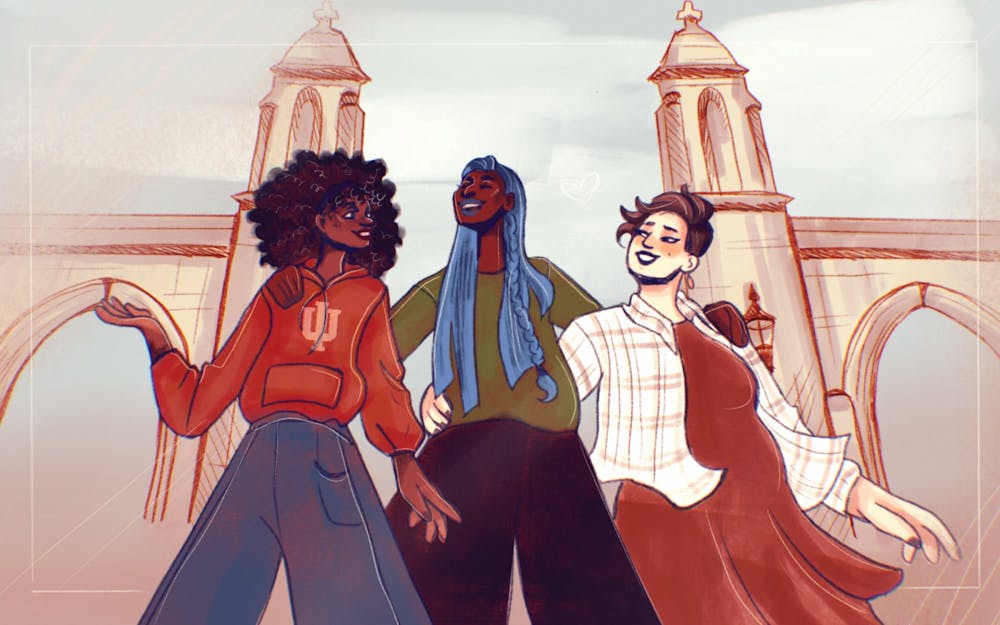In September, IU Bloomington and Indiana University-Purdue University Indianapolis were recognized by INSIGHT Into Diversity with the 2022 Higher Education Excellence in Diversity Award. INSIGHT Into Diversity is the nation’s largest, oldest national diversity and inclusion publication in higher education.
This award honors institutions that are committed to making diversity and inclusion a priority across their campuses. This is the eighth time IU-Bloomington has received the award, and the 11th time IUPUI has been honored.
Related: [National diversity magazine recognizes IU’s work in increasing diversity on campus]
James Wimbush, vice president for diversity, equity and multicultural affairs at IU-Bloomington, said the award provides affirmation that IU is doing some things well in terms of inclusivity and moving ahead compared to its peer schools.
“We feel as though we have made some headway, and to have a national magazine recognize our efforts with the award — it’s reaffirming and it just speaks to the wonderful work being done throughout the entire university,” Wimbush said.
IU has seven cultural centers on campus for the support, education and advocacy of Black, Asian, Native American and Indigenous, Latino, Jewish and LGBTQ students. Students of color make up 28% of the student body in 2022, according to News at IU.
Wimbush said he focuses on creating an environment across all campuses where a diverse population of students, faculty and staff can thrive. He pointed toward IU’s Presidential Diversity Hiring Initiative, a $30 million program started by IU President Pamela Whitten in 2021 that aims to hire from underrepresented groups. Last year, 35 individuals were hired on the Bloomington campus, Wimbush said.
Enrollment offices are working to increase diversity amongst the student body as well, Wimbush said. Recruitment takes intentional methods of getting students from high school to college, he said, and IU works to do so with resources such as its partnership with the Center for Leadership Development in Indianapolis.
“It’s through working to create the pipeline or the pathways to our campus but it’s also being intentional about diversity to the diverse communities,” Wimbush said, “To let them know that any one of our campuses is a campus that would welcome them and is a campus where they can thrive.”
Wimbush said that there is still more work to be done, but he feels the university is in a time where it can make a significant impact.
“I feel as though we have a tremendous opportunity to really make tremendous headway on the diversity front,” he said. “So for me, it’s an exciting time to be at IU.”
However, not all agree that IU is a safe space for minority students. Jo Long, president of the Native American Student Association at IU, said they don’t think the university is good overall for Native students in terms of diversity and inclusion.
One reason for this, they said there are few scholarships available that cater to Native students. IU First Nations’ website lists three scholarships that offer financial assistance.
“Coming from a demographic that is generally low income, IU is not accessible for Native students,” Long said.
Native Americans have one of the highest rates of poverty of minority groups — U.S. Census data reports the national poverty rate for Native Americans was 25.4% in 2018.
Related: [‘Keep telling your stories’: IU celebrates Indigenous Peoples' Day]
Long said they believe IU should give free tuition to students from tribes that come from Indiana, and in-state tuition to students from other tribes. IU’s land acknowledgment recognizes the Miami, Delaware, Shawnee and Potowatomi tribes as “past, present, and future caretakers of this land.”
Long said they’ve also run into issues with their minor in Indigenous and Native American Studies as there is no professor currently teaching the introductory course. IU’s iGPS system does not currently list the course as being offered for the fall 2022 semester. Long said they’ve heard the course will be taught next semester, but there has been no communication from IU about why the course isn’t currently available.
“Generally, I’ve heard that professors aren’t teaching the course all the time, when they should be,” Long said.
IU proclaimed Indigenous Peoples Day on Oct. 10 this year. The following day, an Instagram post from the Native American Student Association was flooded with racist comments directed toward the organization, its members and Native people as a whole.
Long, who runs the NASA Instagram account, said their phone was blowing up for three days straight with comments. They said anti-Indigenous rhetoric is common among the student body, even though major racist attacks aren’t common.
“People are so uneducated about it that they don’t even know that we’re there,” Long said.
The comments on the post included remarks praising Christopher Columbus and denouncing Indigenous Peoples Day, accusing Native people of discrimination against white people and claiming the land as belonging to white people. While these comments have not been deleted, many expressions of support for Native Americans and Indigenous Peoples Day have also been posted since.
After the incident, Nicky Belle, director of the FNECC, sent an email to IU administrators alerting them of the incident.
“I think this in and of itself provides a good deal of insight into the state of diversity and inclusion at IU,” Adin Kawate, education and program assistant at FNECC, said in a separate email to the Indiana Daily Student. “To the administration’s credit, the response to the email was immediate with assurances of support and that measures will be taken as deemed appropriate, however, I think you can see, there is much more work that needs to be done.”
CORRECTION: A previous version of this story misstated what Instagram account Long runs.






